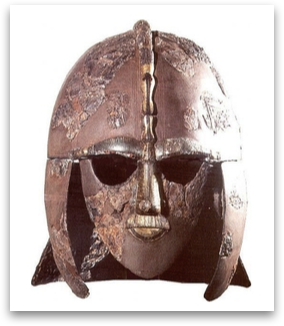
Beowulf Study Guide
Organized around three major battles, the anonymous poem Beowulf wonderfully demonstrates the tension in the Anglo-Saxon world with the Christianizing of a pagan warrior culture, not unlike the poem Dream of the Rood. Part of the author's challenge is to balance the idea of God's providence (a Christian notion) with the idea of fate (wyrd), a pagan belief.
The end result is simply a fascinating story about a hero whose strength, confidence, and loyalty are overshadowed by his kindness, generosity, and self-sacrifice.

Themes and Facts
- Written nearly 1,200 years ago.
- Contains standard elements of Anglo-Saxon poetry (alliteration, kennings).
- Deals specifically with the Danish and Geat tribes.
- Poet almost certainly a Christian who fused Christian values with Anglo-Saxon tradition.
- Organized around three great fights (Grendel, Grendel's mother, the Dragon).
Study Questions
- How does the description of Beowulf change from the poem's beginning to the end? Do you see any growth in his character?
- What tensions do you see between Beowulf's culture and our own? Why is necessary for Beowulf to display the level of confidence he does? Is he a mere braggard? Why list all his accomplishments?
- Do you have any sympathy for Grendel and his mother? How could the story be told so that Heorot and his men were the "bad guys"?
- What is Beowulf's motivation to find Grendel? Is it just so he can add another bragging point to his resumé?
Though the power, beauty, and irony of this great Anglo-Saxon poem is often lost in translation, Beowulf stands as a poem worthy of its inclusion in the canon. Few works capture so powerfully the literary significance of the Christianization of Europe in the medieval world.